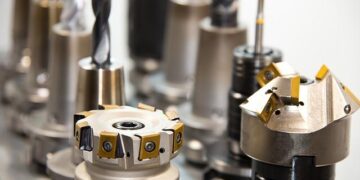In the vast expanse of the universe, where mysteries abound and possibilities are limitless, humanity’s quest for knowledge and exploration is powered by a dedicated engine of innovation: the Space Technology Mission Directorate (STMD) at NASA. Tasked with propelling our understanding of space through groundbreaking technologies, the STMD stands at the forefront of the agency’s efforts to revolutionize space travel and enhance our endeavors beyond Earth’s atmosphere. From pioneering systems designed to sustain human life on distant worlds to developing advanced propulsion systems that promise to reduce travel times across the solar system, the initiatives under the STMD umbrella reflect a unique blend of creativity, scientific inquiry, and engineering prowess. This article delves into the pivotal role this directorate plays within NASA, illuminating its inspiring projects and the visionary minds that drive them, as we chart a course toward a future filled with interstellar possibilities.
Exploring the Frontiers of Innovation in Space Technology
Innovation in space technology is not just about the pursuit of new frontiers but also about reimagining our understanding of the universe. With the Space Technology Mission Directorate at NASA leading the charge, a plethora of groundbreaking initiatives are taking shape, focusing on enhancing our capabilities and redefining what is possible. Key areas of exploration include:
- Advanced Propulsion Systems: Developing technologies that can significantly reduce travel time to distant destinations.
- In-Space Manufacturing: Pioneering techniques that allow for the construction of tools and equipment directly in space.
- Autonomous Systems: Innovating robotic systems that can operate independently, increasing mission safety and efficiency.
- Earth Observation Technologies: Harnessing cutting-edge tools to better monitor our planet’s health and climate change impacts.
The Space Technology Mission Directorate is also focused on fostering collaboration with commercial partners, academic institutions, and international agencies to leverage diverse expertise. By investing in areas such as:
| Technology Area | Goals |
|---|---|
| Human Exploration | Support long-duration missions beyond low Earth orbit. |
| Space Robotics | Enhance robotic operations for exploration and maintenance. |
| Data Management | Improve data sharing and analysis for mission success. |
Such collaborative ventures ensure that the innovations developed are not just theoretical but practical solutions that can be employed in future explorations. The continuous evolution of technology in this sector is paving the way for humanity’s next steps into the cosmos, and the possibilities are as limitless as space itself.
Enhancing Collaborative Efforts for Sustainable Space Exploration
As we venture further into the cosmos, the need for enhanced collaborative efforts within the realm of space exploration becomes increasingly vital. Various organizations, both governmental and private, are recognizing that tackling the challenges of space requires collective innovation and resources. Initiatives focusing on partnerships can pave the way for groundbreaking discoveries, providing access to shared technology, expertise, and funding. Key aspects of these collaborative efforts include:
- Joint Research Programs: Institutions can pool their knowledge to address complex scientific questions.
- Data Sharing: Collaborative platforms facilitate transparent access to research data, fostering a spirit of openness in science.
- Public-Private Partnerships: Leveraging private sector agility alongside public mission objectives can accelerate advancements.
Moreover, to ensure sustainability in these collaborative frameworks, strategies must be established that embrace environmental stewardship and equitable resource distribution. Initiatives that focus on technology transfer, capacity building, and stakeholder engagement will be crucial. A collaborative matrix can illustrate potential partnerships in various areas, highlighting technology, funding, and expertise dimensions:
| Partnership Type | Key Benefits | Example Organizations |
|---|---|---|
| International Collaboration | Shared resources and knowledge | NASA, ESA, JAXA |
| Academic Partnerships | Research innovation | Universities, Research Labs |
| Industry Alliances | Access to cutting-edge technologies | SpaceX, Boeing, Blue Origin |
Implementing Advanced Research Strategies for Future Missions
The evolution of space exploration mandates a commitment to robust research methodologies that enable NASA to propel its future missions beyond conventional boundaries. By leveraging advanced data analysis techniques, the organization is poised to enhance mission planning, execution, and post-mission evaluation. Incorporating machine learning and AI algorithms, NASA aims to identify trends and patterns in vast datasets, transforming raw information into actionable insights. This strategic approach not only optimizes mission timelines and resource allocation but also ensures that teams can adapt quickly to challenges presented by the dynamic space environment.
Moreover, embracing collaborative endeavors across international boundaries significantly enriches the research framework. By fostering partnerships with academic institutions and private enterprises, NASA taps into diverse expertise and innovative technologies. These collaborations pave the way for enhanced cross-disciplinary studies, which spotlight critical areas such as habitat sustainability, propulsion systems, and extraterrestrial geology. The table below summarizes key areas of focus for upcoming projects:
| Research Area | Objective | Collaborators |
|---|---|---|
| Propulsion Systems | Developing efficient space travel technologies | Private sector start-ups |
| Extraterrestrial Agriculture | Studying plant growth in alien soil | Universities |
| Astrobiology | Search for signs of life | International space agencies |
| Data Analytics | Utilizing big data for predictive modeling | Tech companies |
In Summary
As we conclude our exploration of the Space Technology Mission Directorate at NASA, we stand at the precipice of a new era in space exploration and technology innovation. This dynamic division not only pioneers advancements in aerospace engineering but also serves as a catalyst for global collaboration, fueling innovation that extends far beyond the boundaries of our planet. The mission directorate’s commitment to developing cutting-edge technologies promises to unlock new frontiers, making the once-unimaginable a reality.
Whether it’s through groundbreaking research, fostering partnerships, or nurturing the next generation of space explorers, the contributions of the Space Technology Mission Directorate echo throughout the cosmos and into the fabric of everyday life. As we look to the future, the relentless pursuit of knowledge and discovery continues to inspire hope and ambition, reminding us that, in the realm of space, the limits only exist in our imaginations. With each mission, we embark on a collective journey, not just into the stars, but toward a deeper understanding of our universe and our place within it. As we turn the page to the next chapter, the sky is not the limit; it’s just the beginning.






























